“Data show sea levels won't rise dramatically”
(N&O's caption)
Here is my original "Point of View" submission to the N&O. They trimmed its length a bit, and ran it as a letter to the editor. Although the editors waived the length limit, for which I am grateful, they also deleted the graph, the footnote, and the portions in red:
Sea Level False Alarm
Orrin Pilkey's Feb. 23 guest op-ed, "The state's sea level retreat," reveals a serious misunderstanding of what the scientific evidence tells us about sea level. The current rate of sea level rise is miniscule, but he's bought into Al Gore's alarmist prediction of dramatically accelerated sea level rise because, he says, "meltwater from Greenland and Antarctica" might increase the rate of sea level rise.
That's contrary to the best scientific evidence. Greenland is colder now than it was in the 1930s and 1940s, and much colder than during the Medieval Warm Period (800-1100 years ago), neither of which saw substantial sea level rise.
Antarctic ice melt won't drive up sea level, either. Even the alarmist IPCC noted, in their Third Assessment Report, that “It is now widely agreed that major loss of grounded ice and accelerated sea level rise [from the West Antarctic Ice Sheet] are very unlikely during the 21st century.” (East Antarctica is the coldest place on earth, and its ice hasn’t melted in millions of years.)
Alarmists like Al Gore say increases in atmospheric CO2 will, through what MIT climatologist Richard Lindzen calls "implausible chains of inference," cause huge increases in the rate of sea level rise. But the science tells a different story.
Human CO2 emissions have been increasing atmospheric CO2 levels substantially since about the 1940s. So how much has rate of sea level rise increased in response?
None.
We have an excellent, nearly-continuous record of sea level from North Carolina's best tide gauge, in Wilmington, since 1935. In 76 years, sea level has gone up only about six inches, and the rate of sea level rise is decreasing. (The northern end of the NC coast, near Kitty Hawk, sees about twice that rate, due to land subsidence there, but there's no reason to expect subsidence to accelerate.)
Elsewhere, tide gauges have been measuring sea level for more than 150 years. Most show either no trend or decreasing rates of sea level rise in response to human CO2 emissions. The best and most comprehensive analyses of sea level measured by tide gauges around the world show slight decelerations in the rate of sea level rise over the last 80 years. [see footnote 1]
We also have 19 years of satellite altimeter measurements of sea level over the open ocean. They also show decreasing rates of sea level rise.
The measurements all agree: the last two-thirds century of human CO2 emissions resulted in no increase at all in the rate of sea level rise. It's irrational and unscientific to expect that the next two-thirds century will be different. The best evidence is that most of the North Carolina coast will see at most 6-10 inches of sea level rise by 2100.
Dave
Burton
Cary, NC
Email: http://www.burtonsys.com/email
M.Tel: 919-244-3316
The author is a member of the NC Sea Level Rise Impact Study Advisory Committee, and an IPCC AR5 WG1 Expert Reviewer.
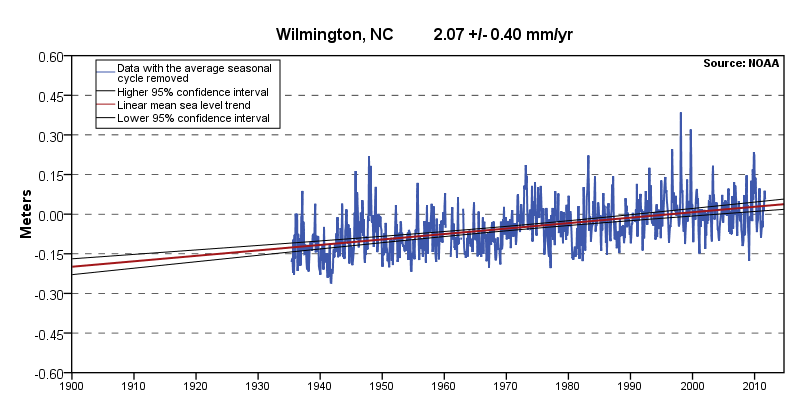
Sea
level at Wilmington, NC
Source:
http://tidesandcurrents.noaa.gov/sltrends/sltrends_station.shtml?stnid=8658120
Footnote 1: Houston, J.R. and Dean, R.G., 2011. “Sea-Level Acceleration Based on U.S. Tide Gauges and Extensions of Previous Global-Gauge Analyses.” Journal of Coastal Research, 27(3), 409–417, doi:10.2112/JCOASTRES-D-10-00157.1
That’s
all I submitted to the N&O, but here is some additional relevant
information:
First, here’s a link to my detailed critique of the 2010 NC Sea Level Rise Assessment Report:
http://www.burtonsys.com/climate/Critique_of_NC_2010_SLR_AR.pdf
Second, here's the latest satellite-altimeter sea level data. Note that ENVISAT is measuring less than 1 mm/year of sea level rise over the last 8 years, compared to a rate of more than 3 mm/year measured by Topex/Poseidon over its 1993-2005 mission life:
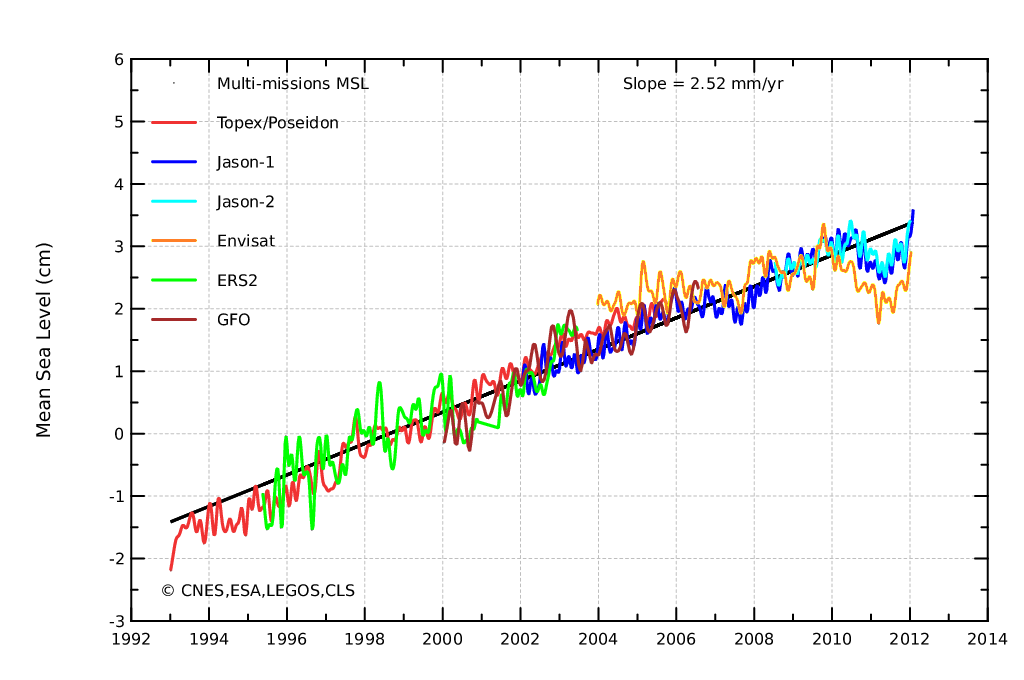
19
years of satellite data – note obvious deceleration
Source: http://www.aviso.oceanobs.com/fileadmin/images/news/indic/msl/MSL_Serie_ALL_Global_IB_RWT_NoGIA_Adjust.png
Third, note that the sea level record from Wilmington is quite typical of tide gauges around the world. Here are links to some additional high-quality tide gauge records, some of which have been measuring sea level for more than 150 years. From them you can see that the rate of sea level rise hasn’t increased at all in response to more than 2/3 century of heavy anthropogenic CO2 (and other greenhouse gas) emissions.
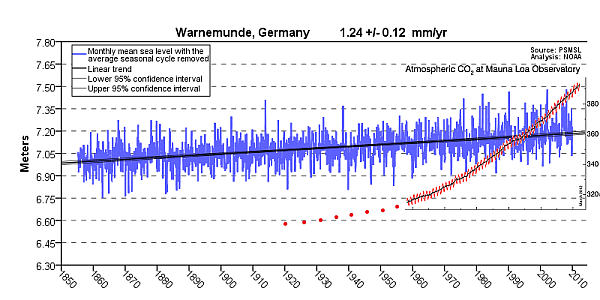 Sea level vs. CO2 level (larger version here)
Sea level vs. CO2 level (larger version here)
Source:
http://tidesandcurrents.noaa.gov/sltrends/sltrends_global_station.shtml?stnid=120-012
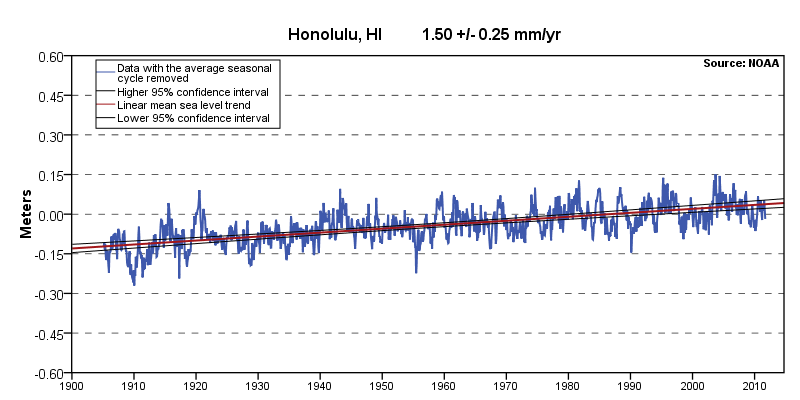 Source:
http://tidesandcurrents.noaa.gov/sltrends/sltrends_station.shtml?stnid=1612340
Source:
http://tidesandcurrents.noaa.gov/sltrends/sltrends_station.shtml?stnid=1612340
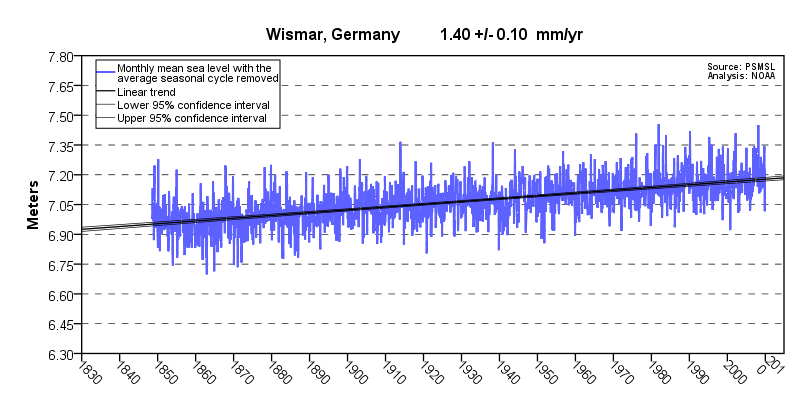 Source:
http://tidesandcurrents.noaa.gov/sltrends/sltrends_global_station.shtml?stnid=120-022
Source:
http://tidesandcurrents.noaa.gov/sltrends/sltrends_global_station.shtml?stnid=120-022
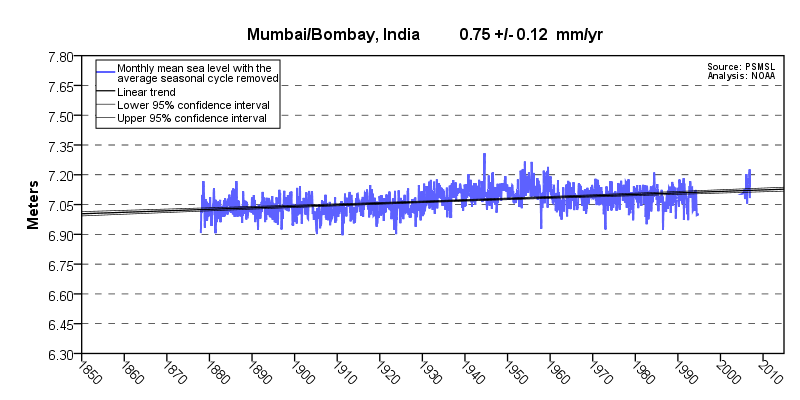 Source:
http://tidesandcurrents.noaa.gov/sltrends/sltrends_global_station.shtml?stnid=500-041
Source:
http://tidesandcurrents.noaa.gov/sltrends/sltrends_global_station.shtml?stnid=500-041
and
many more (click on the station names):
http://www.burtonsys.com/climate/MSL_global_trendtable1.html
Dave
Email: http://www.burtonsys.com/email
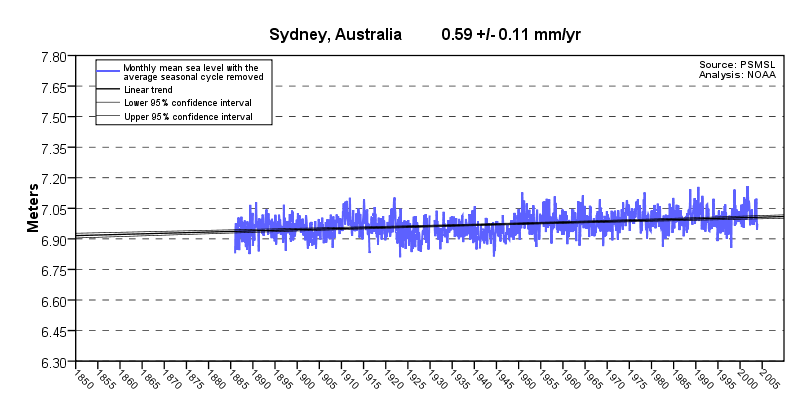 Source:
Source: